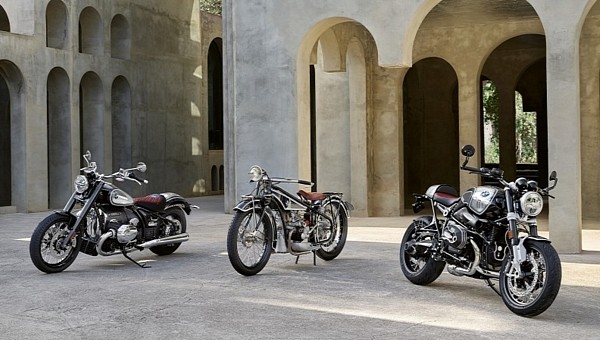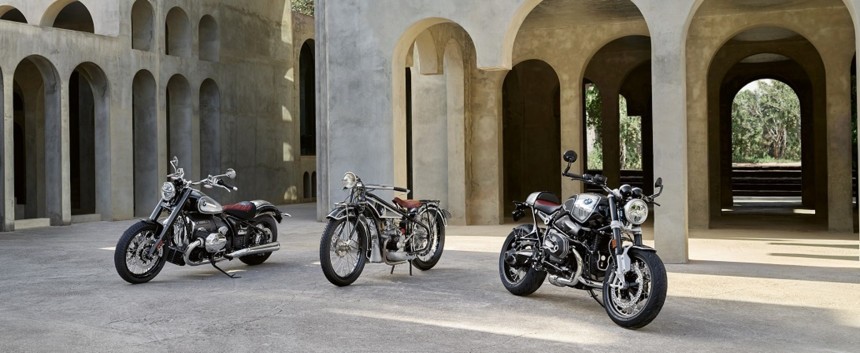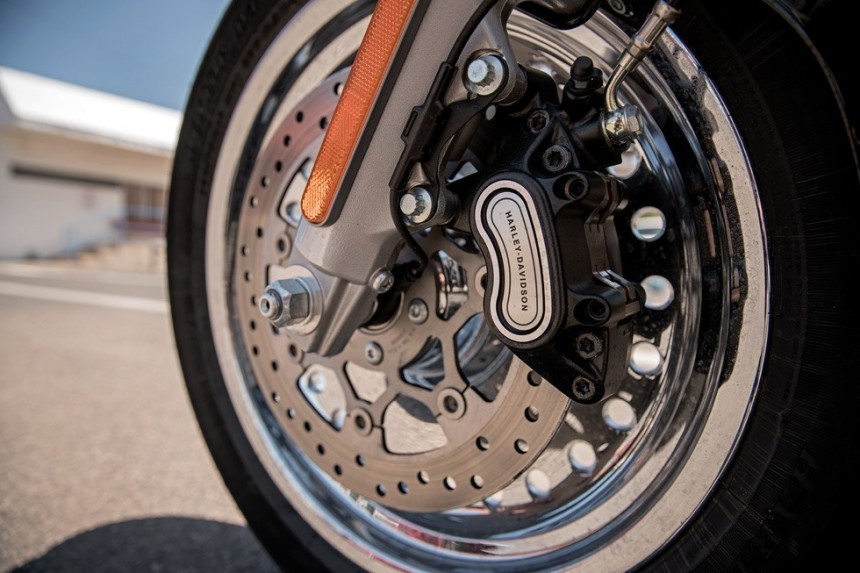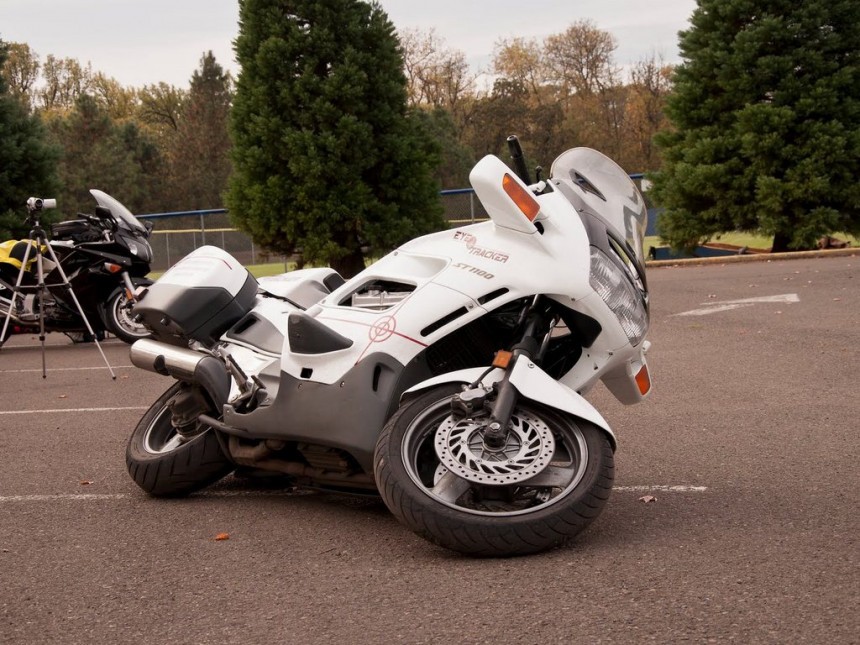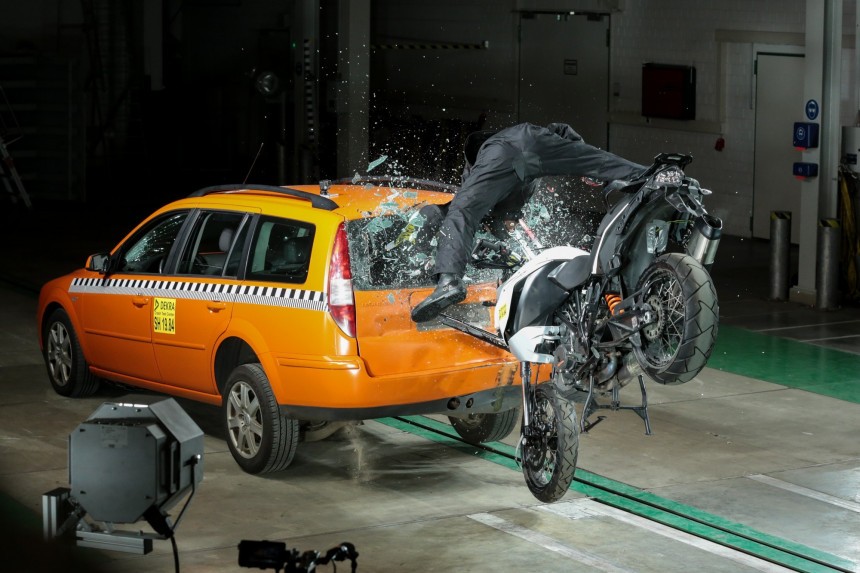If in the first episode of debunking the most common myths about the motorcycle world we talked about the “you'll die soon” and “loud pipes save lives,” so now it is time to talk about another old-time myth that needs to be sent to the history books: lay down your bike. Like the other two, I strongly believe that this is not available anymore, and here's why.
Sometime in the past, motorcycles didn't have good brakes, to put it mildly. In addition, tires were not only skinny but also made from poor materials. Fortunately, these things changed. Now, every modern motorcycle has better wheels, tires, and braking system you can rely on. Considering this, we have to leave behind another myth, besides the others I've already debunked.
I heard this expression “I had to lay it down” many times from various riders. And they said it like they did something brave. A couple of times I had even started to ask questions, and their answers surprised me, at least at the beginning. After a while I wasn't that surprised anymore, and nowadays I don't even ask. I'm sure there are different stories, and various situations, but still, I noticed a pattern: all of them were in situations they could've avoided.
Furthermore, when I tried to dig deeper into their stories I noticed something: their riding skills were overrated. Usually, a fairly skilled rider has a lot of other options when it comes to saving themselves. In addition, they'll save their pricey bike in the process by avoiding a nasty crash.
The main rule to avoiding a crash is to not put yourself in perilous situations. There are many ways of staying safe. First on the line is speed. And I'm not talking about how many digits you have on the speedometer. Sometimes you're safer at 100 mph (161 kph) than at 60 (97 kph). If you're on a highway, there are less chances to find holes, debris, sand, oil residues, and so on than on a backroad, especially if it's used by farming vehicles. In addition, weather is a crucial factor.
On a side note, I'm not the type of guy who never used the sixth gear or the redline on the tachometer. But I tried to use these only when it was safe to do that, especially on a track. In daily traffic, my speedometer never saw a triple-digit number, and that saved me countless times from other fellow drivers.
One doesn't have to ride at 160 mph (260 kph) in order to crash; many times, speed is much lower, but it's high enough to make a good swerve or stopping in time impossible. It's the simple and sad situation of a specific rider who was traveling just 10 mph (16 kph) too fast on the eve of the crash, so they needed 30 feet (10 meters) more stopping distance.
So, the second factor is brakes. Back in the day motorcycles were heavier and relied on drums, so they needed much longer distances to come to a full stop. The motorcycles we ride today are much more technologically advanced and come with a lot of enhancements that make riding them safer.
New bikes have better tires which provide better traction and more grip, dramatically improved disc brakes (ABS included), two or even more calipers, and sintered pads which are way better than the old brake drums. In the past, practicing how to properly lay a bike down was, at times, a part of the learning course, because there were truly no other choices.
Today's bikes and roads make this practice almost entirely obsolete, save for a few cases. One does not have to be a rocket engineer to figure out that rubber stops better than plastic or steel; if coming to a full stop is what's needed, why not use the best we've got to try and stop? Why would anyone think that laying a bike down and letting it slide is one of the first decisions to make in a critical situation? I know we're braking on a few fingers of rubber, but that's still better than one palm of steel or plastic.
Braking hard and staying up offers us way more chances to stop a bike or at least slow it down until a safe swerve is possible. Sometimes even going off the road is an option, and we'll ride away unscratched. On the other hand, letting the bike go means absolutely no control about the slide. In addition, if your foot is trapped under the bike, the result might be disastrous, to say the least.
Other stories are about jumping off a tipping bike, but that will expose the rider to even more injury risks, and we can consider this only when riding alone. If you have a passenger, especially if they're not riders, they literally won't see what's coming. The pilot can anticipate and make preparations. But there won't be enough time to tell the passenger that they're gonna crash. Moreover, they won't be prepared to impact the road.
Funny as such a chat might be, its occurrence has fewer chances than winning the roulette 100 times in a row. You won't ever tell your wife, "Hey Janice, we're somehow on a collision course with the oncoming truck, so I'm planning to lay off the bike. We both should let it go as soon as it has tipped enough... make sure your legs don't get caught underneath it as I lock the rear wheel, would you, darling?"
When I talked to people who actually tipped their bikes, I found out that they couldn't brake enough or they braked too hard on bikes with no ABS. That, sometimes, results in locking the wheels (especially the rear one), so the “lay down” wasn't actually their aim. They just slid and fell. Of course, if you want to avoid a collision you must slow down. After all, it's no-brainer that it's better to hit an obstacle at 8 mph (~13 kph) than at 30 mph (~49 kph) – it might save the day, or at least most of it.
In some situations, when the bike hits a car, the rider will get thrown off in the air over the vehicle. Obviously, the landing will definitely not be as comfortable as laying down on the living room couch. But when compared to hitting the car straight on or sliding under, it looks more appealing. Link this with having taken off as much speed as possible by braking hard, and one might just walk away.
The web forums are full of real stories about riders who could not avoid a collision altogether but who have trusted their brakes more than the poor advice to lay down the bike when the situation gets critical. And they made it. Since probably 99% of pilots are outridden by the bikes they're on, it makes more sense to trust the stopping force of the motorcycle maneuvered skillfully than to lay it down, thus forfeiting the chances of actually slowing as fast and as much as possible.
Would I lay down my bike and let it go? Sure! In extreme situations such as heading for a cliff, a pile of burning vehicles, or other sinister things, less often met as they might be. But even in such unlikely scenarios, the dangers should be foreseen or at least acknowledged, and the riding style to be accordingly adapted. It makes little sense to speed like a madman through the woods or mountains, close to precipices and deep gaps, let alone the fact that a pile of cars on the highway can be seen from afar. Unless there is thick fog.
An old rider used to tell me: "If you don't find enough time to brake hard, there's absolutely no way you have enough time to lay it down. So you'd better learn to ride smart and brake well if you want to make it through." Personally, I believe he couldn't be closer to the truth.
I heard this expression “I had to lay it down” many times from various riders. And they said it like they did something brave. A couple of times I had even started to ask questions, and their answers surprised me, at least at the beginning. After a while I wasn't that surprised anymore, and nowadays I don't even ask. I'm sure there are different stories, and various situations, but still, I noticed a pattern: all of them were in situations they could've avoided.
Furthermore, when I tried to dig deeper into their stories I noticed something: their riding skills were overrated. Usually, a fairly skilled rider has a lot of other options when it comes to saving themselves. In addition, they'll save their pricey bike in the process by avoiding a nasty crash.
On a side note, I'm not the type of guy who never used the sixth gear or the redline on the tachometer. But I tried to use these only when it was safe to do that, especially on a track. In daily traffic, my speedometer never saw a triple-digit number, and that saved me countless times from other fellow drivers.
One doesn't have to ride at 160 mph (260 kph) in order to crash; many times, speed is much lower, but it's high enough to make a good swerve or stopping in time impossible. It's the simple and sad situation of a specific rider who was traveling just 10 mph (16 kph) too fast on the eve of the crash, so they needed 30 feet (10 meters) more stopping distance.
So, the second factor is brakes. Back in the day motorcycles were heavier and relied on drums, so they needed much longer distances to come to a full stop. The motorcycles we ride today are much more technologically advanced and come with a lot of enhancements that make riding them safer.
New bikes have better tires which provide better traction and more grip, dramatically improved disc brakes (ABS included), two or even more calipers, and sintered pads which are way better than the old brake drums. In the past, practicing how to properly lay a bike down was, at times, a part of the learning course, because there were truly no other choices.
Braking hard and staying up offers us way more chances to stop a bike or at least slow it down until a safe swerve is possible. Sometimes even going off the road is an option, and we'll ride away unscratched. On the other hand, letting the bike go means absolutely no control about the slide. In addition, if your foot is trapped under the bike, the result might be disastrous, to say the least.
Other stories are about jumping off a tipping bike, but that will expose the rider to even more injury risks, and we can consider this only when riding alone. If you have a passenger, especially if they're not riders, they literally won't see what's coming. The pilot can anticipate and make preparations. But there won't be enough time to tell the passenger that they're gonna crash. Moreover, they won't be prepared to impact the road.
Funny as such a chat might be, its occurrence has fewer chances than winning the roulette 100 times in a row. You won't ever tell your wife, "Hey Janice, we're somehow on a collision course with the oncoming truck, so I'm planning to lay off the bike. We both should let it go as soon as it has tipped enough... make sure your legs don't get caught underneath it as I lock the rear wheel, would you, darling?"
In some situations, when the bike hits a car, the rider will get thrown off in the air over the vehicle. Obviously, the landing will definitely not be as comfortable as laying down on the living room couch. But when compared to hitting the car straight on or sliding under, it looks more appealing. Link this with having taken off as much speed as possible by braking hard, and one might just walk away.
The web forums are full of real stories about riders who could not avoid a collision altogether but who have trusted their brakes more than the poor advice to lay down the bike when the situation gets critical. And they made it. Since probably 99% of pilots are outridden by the bikes they're on, it makes more sense to trust the stopping force of the motorcycle maneuvered skillfully than to lay it down, thus forfeiting the chances of actually slowing as fast and as much as possible.
Would I lay down my bike and let it go? Sure! In extreme situations such as heading for a cliff, a pile of burning vehicles, or other sinister things, less often met as they might be. But even in such unlikely scenarios, the dangers should be foreseen or at least acknowledged, and the riding style to be accordingly adapted. It makes little sense to speed like a madman through the woods or mountains, close to precipices and deep gaps, let alone the fact that a pile of cars on the highway can be seen from afar. Unless there is thick fog.
